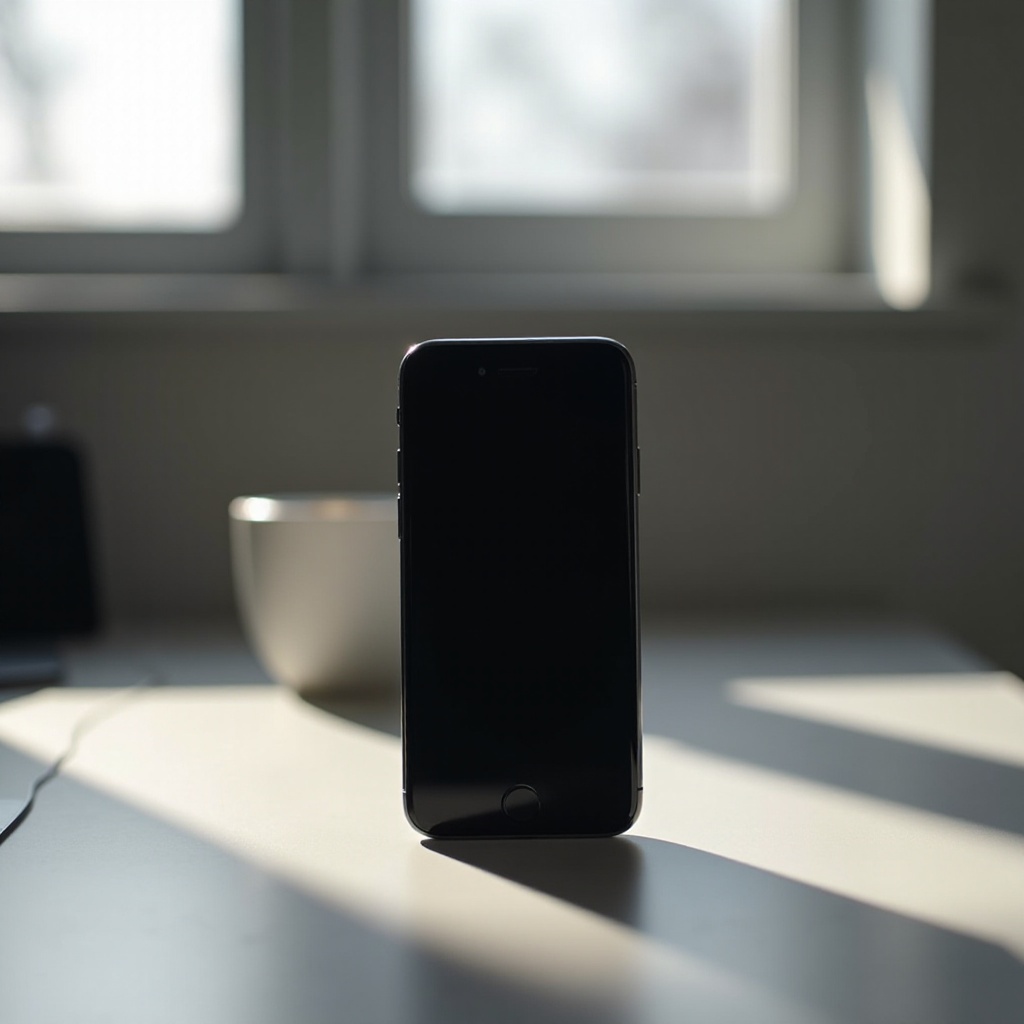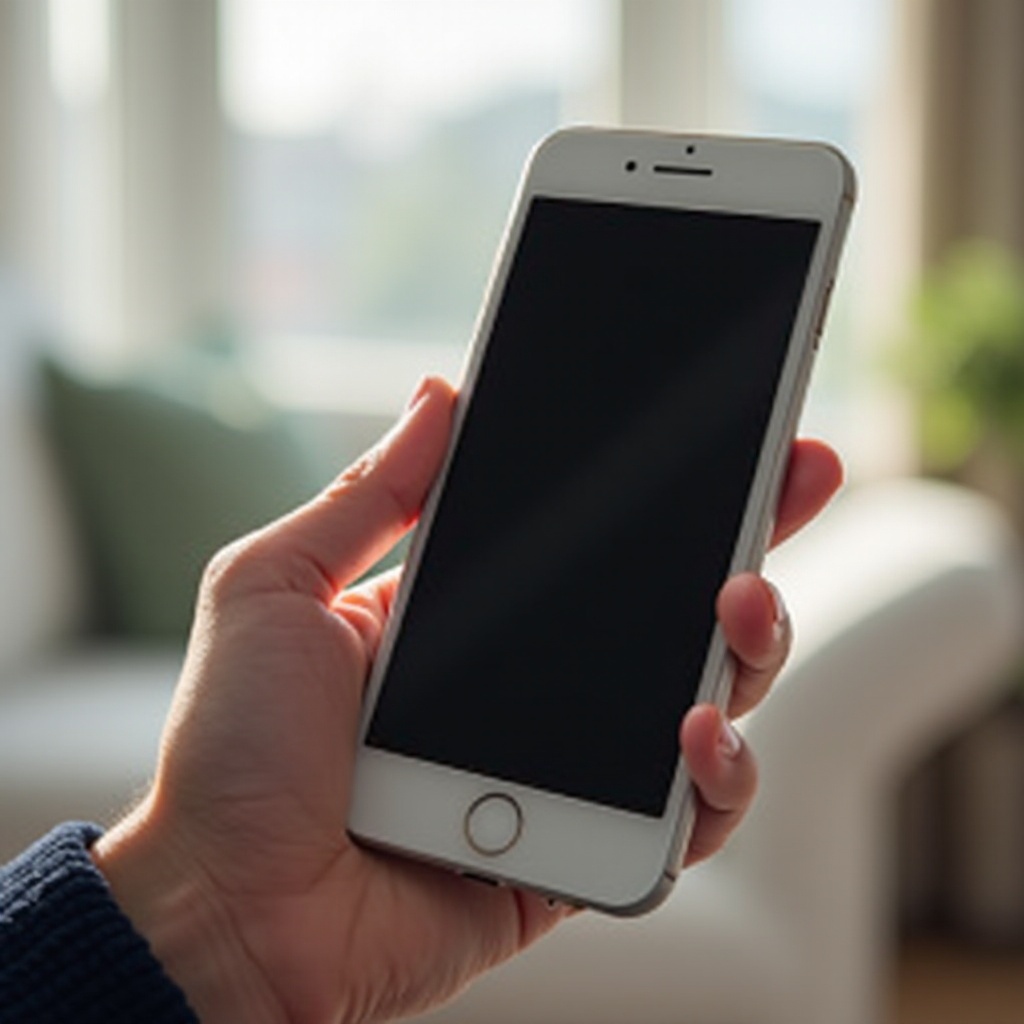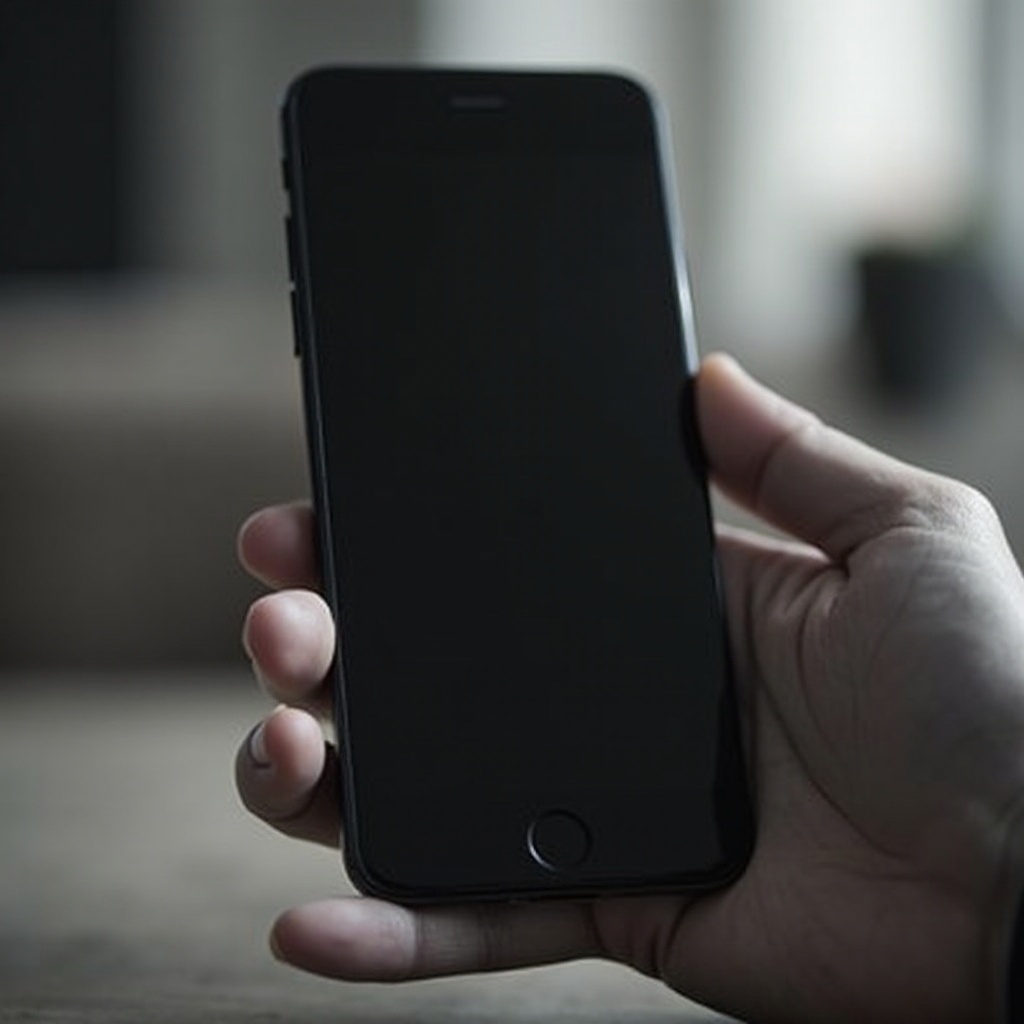Introduction
Seeing your iPhone’s display lose its vibrant colors and turn black and white can be confusing and alarming. While it might seem like a significant issue, there are specific reasons for this occurrence, ranging from simple settings adjustments to more complex software and hardware problems. Understanding these causes is the first step to resolving the issue and ensuring your device functions correctly. In this guide, we’ll thoroughly explore possible reasons behind a black-and-white iPhone screen and provide step-by-step solutions to fix it.

Common Causes of an iPhone Display Turning Black and White
When your iPhone’s display turns black and white, several factors could be responsible. Let’s delve into the three most common causes: accessibility settings, software issues, and hardware problems.
Accessibility Settings
One of the most frequent reasons for a black-and-white iPhone screen is unintentional changes in the accessibility settings. Specific features like color filters or grayscale mode can be activated accidentally, leading to a monochromatic display. Adjusting these settings usually resolves the issue quickly.
Software Issues
At times, software glitches or bugs can cause display problems. An outdated iOS version may also contribute to this issue. Keeping your device’s software up to date is crucial in preventing such anomalies, and sometimes restoring or resetting the device may be necessary.
Hardware Problems
In more severe cases, the issue could lie within the hardware. Physical damage or internal component failure might lead to display malfunctions. Identifying and addressing hardware issues typically require more in-depth investigation and professional assistance.
Understanding the possible causes of a black-and-white iPhone display can significantly streamline the troubleshooting process. Now, let’s proceed with checking and adjusting your iPhone’s accessibility settings to see if the problem can be resolved quickly.
Checking and Adjusting Accessibility Settings
The first step in addressing a black-and-white iPhone screen is to examine your accessibility settings. Here’s how to navigate to these settings and adjust the relevant options.
Navigating to Accessibility Settings
To begin:
1. Open the Settings app on your iPhone.
2. Scroll down and tap on Accessibility.
Adjusting Color Filters and Grayscale Options
Within the accessibility settings:
1. Tap on Display & Text Size.
2. Look for the Color Filters option and ensure it’s toggled off.
3. If Color Filters is on, you can turn it off or select a different option that’s not grayscale.
By navigating and adjusting these settings, you can often resolve the black-and-white display issue without needing further troubleshooting. However, if the problem persists, it’s time to move on to software troubleshooting steps.
Software Troubleshooting Steps
When adjusting accessibility settings doesn’t resolve the issue, the next step is to troubleshoot possible software problems. Here’s a detailed guide for tackling software-related issues.
Restarting Your iPhone
A simple restart can often rectify minor software glitches:
1. For iPhones with Face ID, press and hold the Side button and either Volume button until the slider appears. Drag the slider to power off. After the device turns off, hold the Side button again until the Apple logo appears.
2. For iPhones with a Home button, press and hold the Top (or Side) button until the slider appears. Drag the slider to turn off, then press and hold the Top (or Side) button again until the Apple logo shows up.
Updating iOS
Ensuring your iPhone’s software is up to date can prevent and resolve many issues:
1. Go to Settings > General > Software Update.
2. If an update is available, tap Download and Install.
Resetting All Settings
If updating and restarting don’t help, consider resetting all settings:
1. Navigate to Settings > General > Reset.
2. Tap Reset All Settings.
3. Enter your passcode if prompted and confirm the reset. This action will restore settings to their defaults without deleting your data.
By following these software troubleshooting steps, many users can resolve black-and-white display issues. If your iPhone screen remains monochromatic, it may indicate a hardware problem that needs addressing.

Investigating and Addressing Hardware Issues
When software solutions fail, you must consider that hardware issues might be causing your iPhone’s black-and-white display. Here’s how to investigate and address potential hardware problems.
Inspecting for Physical Damage
Start by examining your iPhone for any signs of physical damage:
1. Check the screen for cracks, chips, or other visible damages.
2. Look for signs of liquid damage, such as discoloration or moisture around ports.
If you find any physical damage, it might be the root cause of your display issue.
When to Seek Professional Help
If you suspect a hardware issue but feel uncomfortable inspecting or repairing it yourself, seek professional assistance:
1. Visit an Apple Store or an authorized service provider for a thorough inspection.
2. Explain the issue in detail so the technician can diagnose correctly.
Authorized Service Providers
To ensure reliable and safe repair:
1. Consult Apple’s list of authorized service providers.
2. Avoid unauthorized repair shops, which could worsen the issue or void any existing warranty.
Ensuring your iPhone receives attention from professionals is vital for maintaining its functionality and longevity. After addressing hardware issues, consider preventive measures to avoid future display problems.
Preventive Measures to Avoid Future Issues
Preventing black-and-white display problems involves a few proactive steps.
Keeping Software Updated
Regularly updating your iPhone’s software can prevent many issues:
1. Enable automatic updates through Settings > General > Software Update > Automatic Updates.
Proper Device Handling
Protect your iPhone from physical damage:
1. Use a sturdy case and screen protector.
2. Handle the device with care to avoid drops or impacts.
These preventive measures can help you maintain your iPhone’s display quality and overall functionality.

Conclusion
A black-and-white iPhone screen can be frustrating, but many problems stem from easily resolved issues such as accessibility settings, software glitches, or minor hardware problems. By following the steps outlined in this guide, you can troubleshoot and often fix the display color issue on your iPhone. If the problem persists, seeking professional help ensures your device is in good hands.
Frequently Asked Questions
How do I get my iPhone out of black and white mode?
You can adjust your iPhone out of black and white mode by navigating to **Settings** > **Accessibility** > **Display & Text Size** and turning off the **Color Filters** option.
Can a software update fix my black and white iPhone screen?
Yes, updating your iPhone’s software can sometimes fix display issues caused by software glitches. Always ensure your device is running the latest iOS version.
When should I consider professional repair for my iPhone’s display?
If adjusting settings and software troubleshooting do not resolve the issue, or if you notice physical damage to your device, seek professional repair. Visit an Apple Store or an authorized service provider for accurate diagnosis and repair.

